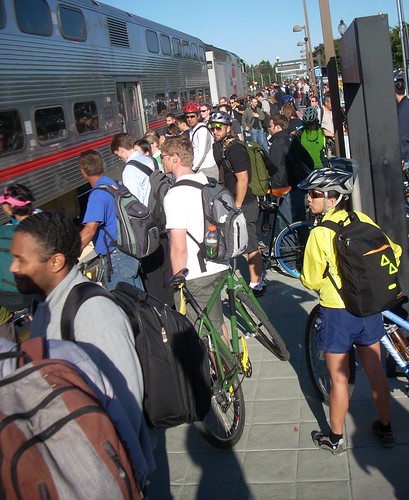Northbound. A broken rail near Morgan Hill, California delayed northbound Caltrain service this morning, with trains originating in Gilroy delayed up to an hour as passengers were bused around the breakage. Passengers crowded onto unfamiliar trains as dispatchers combined multiple routes into single trains. The break, which is also holding up freight rail traffic, was discovered early this morning by Union Pacific.
Fritz of Cyclelicious was among the first to tweet the breakage to the Caltrain Twitter feed and providing train delay information even before the platform announcements were made.
Today also marks the first time I’ve heard reasonably accurate delay announcements over the PA speakers at the train stations. In the past, the delays have always been very vague such as “expect delays of up to an hour.” This morning, the announcer actually announced train numbers and approximate delays in minutes! Kudos to Caltrain for this.
Southbound. Some southbound trains were also delayed after the engine on train 324 quit working. Southbound trains behind #24 were forced to wait while train number 226 coupled up to the disabled train to push it out of the way. Caltrain Tweeters report southbound trains are running as much as an hour late. If somebody has photos of the two trains #24 & #26 coupled together I’d love to see those pictures; please leave a link in the comments.
To receive real time updates on Caltrain issues on your phone, sign up to Twitter and “follow” Twitter Caltrain. Be sure also to set up Twitter and your mobile device to send and receive these updates from Twitter. An analogous bike car info service is Twitter Bike Car. Click here for information on how to contribute to these Twitter feeds.
